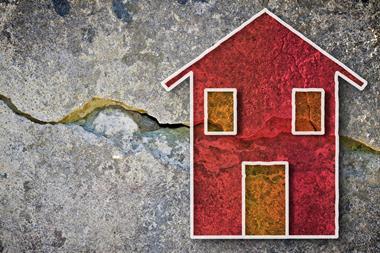Five insurance industry experts discuss the likes of timber risk appetite, building regulations and modular construction methods
Richard Gurney, global head of construction, Marsh Speciality
We see innovation and new technology coursing through the construction industry as new materials and methods of working are introduced and projects come to the market with a clear ambition to drive down global construction industry CO2 emissions.

The challenge is this innovation is, by its nature, often largely untested and so historic data used by underwriters to price risks is not available.
The absence of such data creates uncertainty for underwriters, who are correspondingly cautious in the pricing, capacity deployed and the terms and conditions they are prepared to offer.
The challenge for those ‘leading the charge’ in the construction industry when embracing this drive towards sustainability and lowered emissions is high pricing when compared to more traditional methods, leading to a potential disincentive to innovate in the way society is demanding.
We have been saying for some time that we need more of an ongoing dialogue between the construction and insurance industries to ensure this misalignment is not perpetuated and to make discussions more forward looking and away from the moment perceived new risks are presented to the market.
In parallel and with few exceptions – such as our recent collaboration with Beazley in the construction professional indemnity market – we are still not seeing any incentivisation in pricing and capacity for those clients who are demonstrably first movers in driving a net zero agenda when it comes to real action and operation.
As an illustrative point, we are seeing an increasing move towards the use of timber, in various forms, coming into the market for its emissions benefits. Given the CO2 emissions created by the manufacture and transport of steel and concrete – this is hardly surprising.
The insurance market’s appetite for timber risks in the construction phase, and particularly once projects have moved into the operational phase, is far too limited.
Alastair Blundell, head of general insurance, Biba
Widescale adoption of green methods of construction is vital if the UK government is to meet its 2050 net zero target.

Currently, the whole of the built environment contributes 40% of carbon emissions, underlining the need for a radically different approach – including a range of new ways of working and the use of innovative, green materials, greater use of modular design, mass timber, low carbon concrete and recycled steel.
This revolution in what is known as modern methods of construction (MMC) can only happen if there is an adequate supply of insurance at both the construction and lived-in phases of a building.
Some insurers are embracing MMC, but we need to see more capacity deployed.
Encouraging MMC is vital and insurance is key.
Having relevant regulations and robust certification covering the design, manufacture and sign-off and controls of MMC ensuring a precision build and coordination between offsite and onsite phases of construction should help to build a picture of the insurance risk these building present and make buildings, liability professional indemnity and warranty cover more available.
Chris Andrews, director of risk management solutions, Aviva
The built environment contributes 40% of the UK’s carbon emissions. So, when we talk about moving to net zero, the construction sector and their insurance partners will be pivotal to the transition.

In doing so, we need to consider the carbon footprint of a building over its lifetime. The key to this is risk management.
From concept to design, construction to how those spaces will be used, strategic risk management will ensure the buildings of the future can withstand the effects of flood, fire, subsidence or water damage. And it goes without saying they must be safe.
How do we do this? It starts with continual learning and sharing what risks these buildings might face.
At Aviva, we‘ve expanded our underwriting appetite to include engineered timber in commercial developments. Risk management sits at the heart of our strategy and our learnings will allow us to underwrite buildings that incorporate greater use of sustainable materials.
Insurers also need to become credible advocates for the guidelines and regulation that our customers can’t design for themselves – including in-built resilience and the lifespan of the building.
For example, the current building regulations are intended to ensure a reasonable standard of life safety in a fire and whilst they support the protection of property, they do not often go far enough and are not designed to improve the overall lifespan of a building.
And finally, we need to keep pace with new design and risk management approaches so that an insurance gap does not emerge.
Andy Bord, chief executive, Flood Re
There is undoubtedly a role for the insurance market to play in terms of developing underwriting solutions for new, greener, methods of construction. However, the vast majority of the UK’s housing stock is not new build but is pre-existing, which means there is perhaps an even greater opportunity to drive change through the claims process.

That is, not replacing like for like, but encouraging greener repairs, particularly those that make properties more resilient to flood and other natural perils.
With an estimated one in four UK properties already at risk of flood due to climate change, the green benefits of adopting property flood resilience measures are significant as Aviva’s Building Future Communities report, published in February 2023, underlines.
The report showed that the carbon footprint of restoring a three bedroom house after a flood is equivalent to that of 6.5 transatlantic flights. In comparison, installing basic resilience measures to protect against flooding can reduce this carbon cost by a hefty 64%.
Our ground-breaking Build Back Better scheme – adapting homes as part of flood repair – is designed to help improve the resilience of the UK’s housing stock, stop the cycle of wasteful and polluting ripping-out and, importantly, enables flood-prone communities to remain viable despite the advance of the effects of climate change.
Martin Parker, head of construction underwriting UK, Markel
Green methods of construction are relatively new and include using more sustainable materials than traditional methods, recycled material or those with a low environmental impact. Buildings constructed with low energy usage technology and those using modular construction methods also create a greener footprint.

This, undoubtedly, is the future and we are seeing an increasing number of builds going down this route.
Markel insures the construction firms rather than the buildings themselves and providing the right level of cover will allow builders to adopt greener methods of construction, safe in the knowledge that they have the right protection in place.
Underwriting is data driven at its heart. More green builds will increase data, helping insurance cover to become more mainstream. However, where that is lacking, underwriters need to demonstrate flexibility to gain a detailed understanding of individual risks.
Detailed proposals are important but underwriters also need a willingness to speak to brokers and clients – to create a tri-partite relationship that builds understanding for all parties, as well as providing a stable insurance market for greener methods of construction as they become more commonplace.
Read: Manifesto 2024 – Biba urges government to use MMC to hit targets
Read: Industry cannot be expected to foot climate bill – Swiss Re
Explore more ESG-related content here and discover other news analysis here












































No comments yet